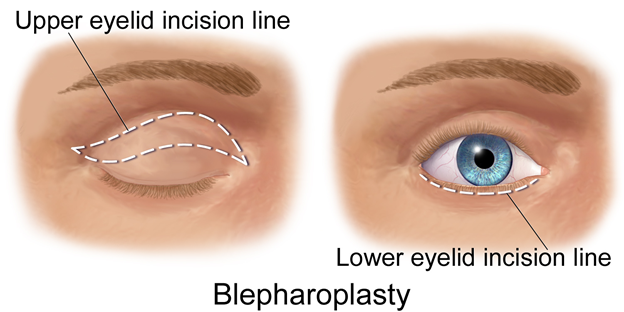
- Dry eye
- Lots of irritation
- Eyelid drooping
- Eyelid looking like it was turned outwards or inwards
- limited side vision
Eyelid problems? You may be in need of surgery
Having an eyelid problem can be painful, limit your vision, and affect your appearance. Many people have eyelid problems, this includes droopy upper eyelids, extra eyelid skin or eyelids that turn inward or outward. Fortunately, ophthalmologists can treat many types of eyelid problems with surgery.

When one or both of the upper eyelids droop. This is corrected by strengthening the eyelid muscle by shortening it, causing the lid to lift to a normal positon.
When the lower eyelid droops down and turns outward. This can make your eye dry, watery, and sensitive to light and wind. A surgical procedure is done to return the eyelid to its original position.
Over time, your eyelid skin can stretch too much over time, causing vision issues or bags under the eyes if it's the lower eyelids. A procedure called Blepharoplasty removes any excess eyelid skin and the surgeon may also remove any fatty tissue, solving the issue.
When the lower eyelid droops down and turns outward. This can make your eye red, watery, irritated, and even lead to infection on your cornea. A surgical procedure is done to return the eyelid to its original position.
Before your eyelid surgery, it is important you discuss any and all meds you take with your ophthamologist. This includes over-the-counter, prescriptions, vitamins, and supplements.
Schedule Eyelid Exam New Patient Forms